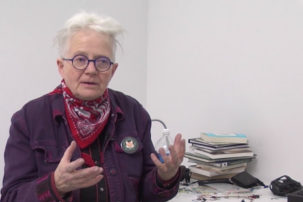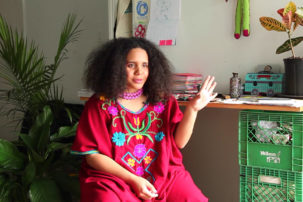In March 2017, Halifax artist Lou Sheppard travelled by ship with a group of artists, writers, philosophers and scientists to Antarctica. Sheppard’s project for the journey was to map a section of the continent’s coastline, using the varying lines of longitude and latitude in geographic features—inlets, islands and peninsula—as a compositional guide to score the landscape as soundtrack.
The resulting multimedia work, Requiem for the Antarctic Coast, which showed at last summer’s Venice Biennale as part of the Antarctic Pavilion, is “at times discordant and rich, and at others a simple melody,” as Sheppard describes it. It transforms terra incognita into a cartography of the imagination.
Sheppard’s latest project, A Strong Desire, involves dance choreography based on blank spaces between words in the DSM‘s gender dysphoria text. The work, which debuts at the Khyber Centre for the Arts in Halifax this April, is both personal and political, and is of a piece in a practice that privileges the in between zones of presence and absence, place and non-place, dissonance and symmetry and fluid identity as spaces of generative if unpredictable discovery.
“Where things start to break down, where things become unexpected or where things stop falling into an already understood system,” Sheppard says, “is where new meaning, or more possibilities of meaning, is revealed.”—Bryne McLaughlin, senior editor








